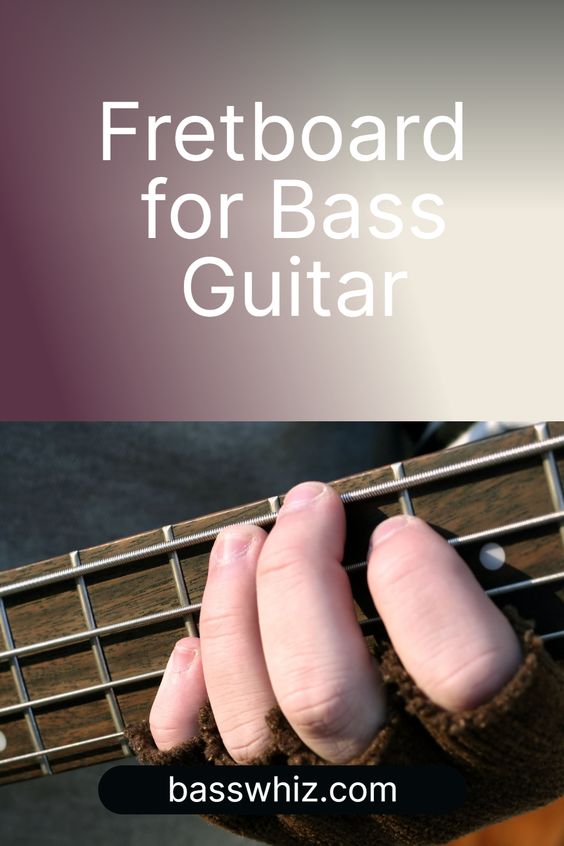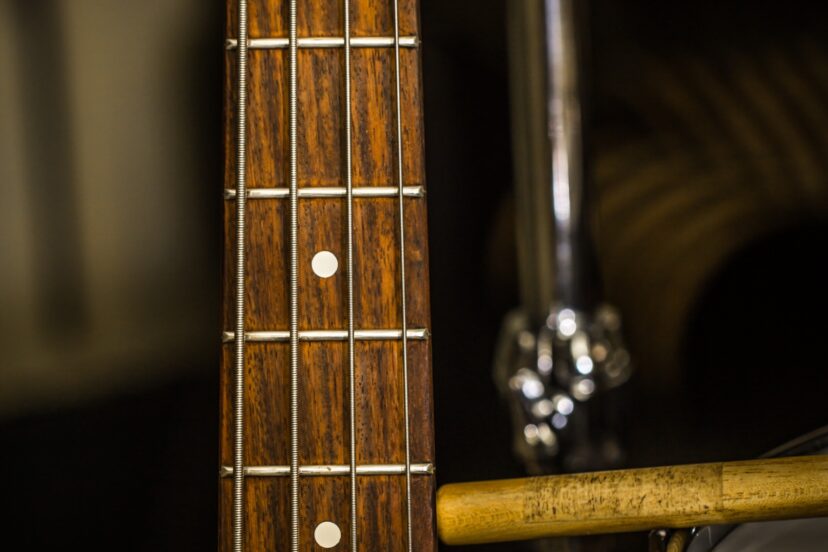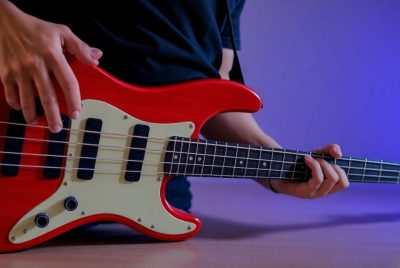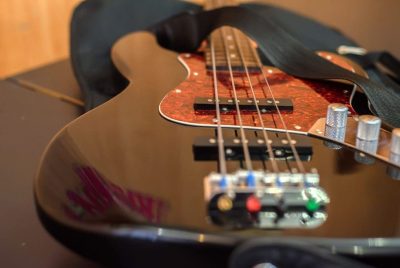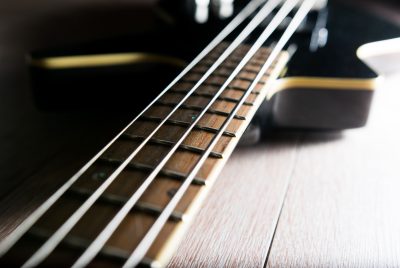Fretboard for Bass Guitar: An Introduction
Understanding the fretboard for bass guitar is crucial for every bassist, whether you’re a beginner just starting out or a seasoned player looking to refine your skills. The fretboard is where the magic happens – it’s the map of your instrument and the pathway to creating beautiful melodies and rhythms. In this essential guide, we’ll dive deep into the nuances of the bass guitar fretboard, exploring its layout, the importance of finger positioning, and valuable tips to enhance your playing technique. Let’s embark on this musical journey and discover how mastering your fretboard can elevate your sound and performance!
Understanding the Anatomy of a Bass Guitar Fretboard
The anatomy of a bass guitar fretboard is essential for any aspiring bassist looking to master their instrument. The fretboard, often seen as the command center of the bass guitar, is where the magic happens, enabling musicians to navigate between notes and create captivating grooves. Typically made from hardwoods like maple or rosewood, the fretboard features a series of metal frets that mark the chromatic notes, making it easier for players to identify their positions. Understanding how the fretboard is laid out helps bassists develop their finger placement and technique, leading to a more fluid and expressive playing style.
One crucial aspect of the fretboard for bass guitar is the number of frets it contains, which commonly ranges from 20 to 24. Each fret corresponds to a half step in pitch as you move up the neck, allowing for an extensive range of notes. Bass guitarists must familiarize themselves with the fretboard’s layout to improve their ability to improvise and play various styles, be it funk, rock, or jazz. Moreover, knowing where to find the root notes, octaves, and intervals on the fretboard can greatly enhance a player’s overall musicianship, providing a strong foundation for creating bass lines that resonate with other band members.
In addition to the frets themselves, other features of the fretboard for bass guitar, such as dot inlays, markers, and side markers, assist players in navigation. These visual guides make it easier to quickly locate specific notes while performing, especially in fast-paced solos or intricate rhythms. Understanding the anatomy of the fretboard also extends to various tuning methods and string configurations, which can further influence a bassist’s approach to learning and playing.
Ultimately, a deep understanding of the fretboard for bass guitar is not just about memorizing notes; it’s about developing a relationship with the instrument. By taking the time to explore the distances between frets, become familiar with scales and chords, and practice regularly, bassists can unlock their instrument’s full potential. This foundational knowledge offers the groundwork needed for creativity and improvisation, ensuring that every musician can carve out their unique sound within the diverse world of music.
Laminated 6 String Bass Fretboard Poster – Nashville Numbering System, Circle of 5ths, Notes Instructional Chart | A New Song Music | 11×17

Best 6-string bass fretboard trainer
Laminated Nashville Numbering System Chart
The Laminated 6 String Bass Fretboard Poster from A New Song Music is a fantastic resource for both beginner and seasoned bassists. Measuring 11×17 inches, this instructional chart features a comprehensive guide to the Nashville Numbering System, a helpful Circle of 5ths, and clear note representations, making it an invaluable tool for mastering the bass fretboard. The lamination ensures durability, allowing musicians to reference it during practice without worrying about wear and tear.
In addition to its educational value, the poster’s clean and attractive design makes it a great addition to any practice space. Musicians can easily hang it on the wall or keep it nearby for quick reference. Overall, the Laminated 6 String Bass Fretboard Poster is a must-have for anyone looking to deepen their musical understanding and improve their skills on the bass guitar.Pros
Pros
Laminated for easy marking
Laminated for durability
Comes laminated
Options for 4, 5, 6 and 7 string basses
Important info at a glanceCons
Cons
Advanced theory concepts
5th and 12th fret markers on bass side are inconvenient, especially when the chart is on the wall
Weight: 1 ounces Design: Laminated 6 String Classic Material: Paper, Laminated Proficiency Level: All Instrument: Electric Bass Feature: Manual operation
Choosing the Right Fretboard Material for Your Bass Guitar
When selecting a fretboard for bass guitar, a musician’s choice can significantly impact both sound quality and playability. The material of the fretboard plays a vital role in shaping the overall tone of the instrument. Common options include rosewood, maple, and ebony, each of which offers distinct characteristics and aesthetic appeal. Rosewood, for instance, is known for its warm and mellow tone, making it a favored choice among jazz and blues bassists. Its natural oils also lend it a smooth feel under the fingers, allowing for comfortable playability.
Maple, on the other hand, provides a brighter tone and a snappier attack, often sought after by players who lean toward genres such as rock and funk. The light color of maple also contributes to a bold visual appearance, which can enhance the overall look of the bass guitar. One of the most significant benefits of choosing a maple fretboard for bass guitar is its durability. It’s less prone to wear and can withstand the rigors of aggressive play, making it a reliable choice for gigging musicians.
Ebony is another popular fretboard material, praised for its luxurious feel and sleek appearance. Known for its dense and smooth surface, ebony allows for fast playing while delivering a clear, articulate sound. This makes it an excellent option for those who perform intricate fingerings or require precision in their playing style. While it may be slightly heavier and higher in cost than its counterparts, many musicians believe that the tonal and tactile benefits of ebony justify the investment.
Ultimately, the right fretboard for bass guitar depends on a player’s individual style, preferences, and the type of music they play. It’s important to consider how each material interacts with your playing technique and the sound you’re aiming to achieve. Whether you gravitate toward the warmth of rosewood, the brightness of maple, or the richness of ebony, understanding these elements can help you make an informed decision and enhance your overall musical experience.
19/24 Fret Guitar Luthier Rosewood Fretboard Blank for Electric Guitar Bass, 24 Fret

The best rosewood fretboard replacement
Colaxi Guitar Fretboard Blank
The Colaxi 19/24 Fret Guitar Luthier Rosewood Fretboard Blank is a top-quality choice for both electric guitar and bass builders. Crafted from premium rosewood, this fretboard blank boasts a stunning finish that not only enhances the aesthetic appeal of any instrument but also provides a smooth playing surface for optimal performance. With 24 frets available, luthiers can create versatile instruments that cater to a wide range of musical styles.
Reviewers highlight the excellent craftsmanship and durability of this fretboard blank, making it a reliable option for both professional luthiers and enthusiastic hobbyists. Its precise dimensions and grain patterns offer significant customization potential, allowing for the creation of unique and personalized guitars. Overall, the Colaxi Rosewood Fretboard Blank is a valuable addition to any luthier’s toolkit, marrying beauty and functionality effortlessly.Pros
Pros
Tailor-made for extended range guitars
Ready to finish and fit
Basic construction materials are of high quality
Inlay workmanship
Comes pre-slotted for 24 fretsCons
Cons
Neck is too thin for some players
Hard to find
Number of strings: 10 Color: Brown Material: Rosewood Design: With inlay and white acrylic inlay Fret: 19/24 Sound quality: Good stability
Proper Maintenance and Care for Your Bass Guitar Fretboard
Proper maintenance and care for your bass guitar fretboard is essential to ensure not only the longevity of your instrument but also to maintain optimal playability and sound quality. The fretboard, being the part of the guitar that directly interacts with your fingers, requires regular cleaning and conditioning. As oils from your fingers and dirt accumulate over time, they can lead to a build-up that, if left unattended, may affect both the aesthetics and functionality of your fretboard for bass guitar.
Cleaning your fretboard should be a routine part of your instrument upkeep. Start by removing any strings and gently wiping down the fretboard with a soft, dry cloth to eliminate dust and grime. For more stubborn dirt or residue, you can use specialized fretboard cleaners or lemon oil, which not only cleans but also conditions the wood. It’s important to apply these products sparingly and avoid over-saturating the fretboard, as excess moisture can damage the wood and affect its resonance.
Additionally, the type of wood on your fretboard can determine the kind of care it requires. Ebony and rosewood, commonly found on bass guitars, benefit from regular oiling to keep them nourished and prevent them from drying out. On the other hand, maple fretboards are typically finished and may only need occasional cleaning without the need for oils. Understanding the specific needs of your bass guitar fretboard will help you tailor your maintenance routine accordingly and ensure your instrument remains in the best condition.
Finally, regular inspections of your fretboard for bass guitar can help identify any issues early on, such as fret wear or unevenness, which can negatively impact playability. If you notice any irregularities, consider seeking professional assistance for fret dressing or leveling. By prioritizing the care of your fretboard, you not only enhance the overall performance of your bass guitar but also create a more enjoyable playing experience.
Tips for Improving Your Fingering Technique on the Bass Guitar Fretboard
Improving your fingering technique on the fretboard for bass guitar is essential for enhancing your overall playing ability and musical expression. One of the most effective ways to develop precision and speed in your finger movements is to practice scales and arpeggios consistently. Start with the major and minor scales, as they form the building blocks for much of the music you’ll encounter. Focus on keeping your fingers close to the fretboard to minimize movement, which will help you play more efficiently. Additionally, try to incorporate different tempos into your practice routine, starting slowly to ensure accuracy and gradually increasing the speed as you become more comfortable.
Another crucial aspect of improving your fingering technique is hand positioning. Ensure that your thumb is placed behind the neck of the bass, providing proper support while allowing your fingers the flexibility to move smoothly across the fretboard. Try to maintain a relaxed grip—tension in your hand can lead to inaccuracies and fatigue. Incorporate exercises that promote dexterity, such as finger independence drills and 4-finger exercises, which encourage each finger to develop strength and precision on the fretboard for bass guitar.
Listening to and watching proficient bass players can also provide valuable insights into effective fingering techniques. Pay attention to their hand positions, fingerings used for various passages, and how they navigate the fretboard. Don’t hesitate to imitate their techniques; however, always be mindful of adapting those techniques to fit your unique playing style. Moreover, recording your practice sessions can help you identify areas where your fingering may need improvement, allowing for targeted practice sessions that focus on those specific issues.
Lastly, patience and persistence are key to mastering your fingering technique. Set aside regular practice time and create a structured routine that incorporates various exercises, scales, and songs. Track your progress to stay motivated and celebrate small milestones along the way. With dedication and focused practice on the fretboard for bass guitar, you will soon notice significant improvements in your agility, speed, and overall performance. Remember, every great player started where you are now, so embrace the journey and keep progressing!
Exploring Different Scales and Patterns on the Bass Guitar Fretboard
Exploring different scales and patterns on the fretboard for bass guitar can open up a whole new world of musical expression and creativity. The bass guitar, often considered the backbone of a band, has an integral role in shaping harmony and rhythm. By familiarizing yourself with various scales and their applications, you can enhance your skills and contribute more richly to your musical projects. Whether you’re aiming for a smooth groove or a complex melodic line, understanding the diverse patterns available on your fretboard will allow you to navigate different musical landscapes with ease.
The fretboard for bass guitar is laid out in a way that can initially seem daunting, but once you start identifying scale patterns, it becomes significantly more manageable. Major and minor scales are foundational, but exploring other modes like Dorian and Mixolydian can add unique flavors to your playing. Each scale can be practiced in different positions and stretches across the fretboard, allowing you to become versatile in your finger placements. Moreover, integrating arpeggios and chromatic runs into these scales can help you to create compelling bass lines that stand out yet complement the other elements of a song.
As you dive deeper into exploring scales and patterns, it’s also beneficial to think about how these musical elements connect to the genres you enjoy. For instance, jazz bassists often employ complex scales and syncopated rhythms to create intricate lines, while rock and funk playing styles may lean more towards simple, catchy patterns that get the audience moving. Experimentation is key; try improvising over backing tracks with different scale patterns to discover what resonates with your personal style.
Moreover, visualization of the fretboard for bass guitar is crucial, as it helps in recalling scale shapes and patterns during practice and performance. Often, players will find it useful to map out their target notes and chord tones across the fretboard. This practice not only improves your familiarity with each area of the fretboard but also empowers your musicianship by fostering a deeper understanding of how scales interact with chords. Ultimately, the journey through different scales and patterns on the fretboard is a continuous process, but one that promises to enrich both your playing and the music you create.
Bass Fretboard: Memorize The Fretboard In Less Than 24 Hours: 35+ Tips And Exercises Included

Best bass guitar scales and modes book
Bass Fretboard 24-Hour Memorization
The “Bass Fretboard: Memorize The Fretboard In Less Than 24 Hours” is a comprehensive guide that offers over 35 practical tips and exercises designed to help bass players of all skill levels master their instrument quickly. This resource stands out for its user-friendly approach, breaking down complex concepts into manageable lessons that can be absorbed comfortably over a single day. The structured exercises not only reinforce muscle memory but also enhance a player’s ability to navigate the fretboard with ease and confidence.
Users have praised the product for its clarity and effectiveness, noting noticeable improvement in their fretboard recognition within hours of practice. Additionally, the varied techniques presented appeal to both visual and auditory learners, making it an accessible tool for everyone. Overall, this guide is a must-have for anyone looking to elevate their bass-playing skills and is especially valuable for beginners seeking a solid foundation.Pros
Pros
Content is helpful for any instrument, not just bass
In-depth coverage of memorizing the fretboard
Great for beginners
Lots of tips and exercises includedCons
Cons
Book might not be as effective for experienced players
Cheesy, low-budget presentation
Author: Unknown Publication date: Not mentioned Time to memorize: < 24 hours Tips and exercises: 35+ Model: Fretboard
Mastering Note Positions and Intervals on the Bass Guitar Fretboard
Mastering note positions and intervals on the fretboard for bass guitar is essential for any musician aiming to deepen their understanding of the instrument. The fretboard serves as a map, guiding players through a landscape of notes and sounds that can be explored creatively. To effectively navigate this terrain, one must familiarize themselves with the layout of the fretboard, recognizing where each note lies and understanding how to move between them. Essential to this journey is the knowledge of intervals, which are the distances between two notes, as they form the foundation of melodies, harmonies, and rhythmic patterns.
A practical exercise for mastering note positions involves learning the notes on each string, starting from the open string and moving up the frets. The standard tuning of a bass guitar (E, A, D, G) means that each string provides a unique set of notes arranged in perfect fourths. By starting with open notes and gradually moving up the frets, players can develop muscle memory and a strong visual connection to the fretboard for bass guitar. Additionally, practicing scales and arpeggios across different strings enhances familiarity with intervals, as players must navigate various patterns that connect notes in both horizontal and vertical movements on the fretboard.
To further enhance your understanding of intervals, it’s beneficial to incorporate ear training into your practice routine. Being able to recognize intervals by ear will not only improve your playing but will also aid in improvisation and composition. For example, play a major scale and identify the steps between each note. By singing the intervals as you play them and practicing them in different contexts—such as in songs or bass lines—you’ll reinforce your learning and establish a stronger connection to both the physical and auditory aspects of playing the bass guitar.
Ultimately, mastering note positions and intervals on the fretboard for bass guitar is a continual journey filled with discovery and growth. By dedicating time to practice and explore the instrument, players can unlock a wealth of musical opportunities. As you gain confidence in navigating the fretboard and recognizing intervals, you’ll find that your ability to express yourself musically will expand, allowing you to improvise, compose, and collaborate with other musicians more effectively. Embracing this process will not only enhance your technical skills but also deepen your appreciation for the art of bass playing.
Utilizing Fret Markers for Navigation on the Bass Guitar Fretboard
Navigating the fretboard for bass guitar can often be a daunting task for beginners and even some seasoned players. However, fret markers serve as invaluable tools, providing visual cues that simplify the learning process and enhance overall playing proficiency. These markers, usually found on the fretboard at specific intervals, help players quickly identify the notes they are playing and the positions of their fingers. By utilizing these guides, bassists can develop a better sense of orientation, ensuring they can move fluidly along the neck without losing their place.
Understanding the layout of the fretboard for bass guitar is crucial for mastering various techniques and styles. Fret markers typically indicate the third, fifth, seventh, ninth, and twelfth frets, which correspond to specific notes on the scale. For instance, the fifth fret on the E string is an A note, which is often used in many musical contexts. By consistently referencing these markers, bassists can create patterns and develop muscle memory, making transitions between chords and notes more seamless. The awareness of where these markers are positioned aids in improvisation and helps players quickly find their way around the fretboard during performances.
In addition to aiding navigation, fret markers can inspire creativity and encourage exploration of the instrument. By analyzing their placement, musicians can experiment with different scales and modes, uncovering new sounds and ideas that might not have been accessible otherwise. The relationship between the markers and the notes they represent can also enhance a player’s understanding of music theory, bridging the gap between technical skill and musical expression. This dual benefit not only helps in navigating the fretboard for bass guitar but also enriches the overall musical experience.
Ultimately, the strategic use of fret markers allows for greater confidence in playing and a more fulfilling journey on the bass guitar. Whether a novice grappling with the basics or a more advanced player looking to refine their technique, these visual aids serve as essential signposts. By committing to consistent practice and recognizing the value of these markers, bassists can unlock their potential and expand their musical vocabulary, making their time spent with the instrument all the more rewarding.
Enhancing Your Playing Speed and Accuracy on the Bass Guitar Fretboard
Improving your playing speed and accuracy on the bass guitar fretboard is essential for any serious bassist aiming to enhance their overall musicianship. One effective approach is to ensure you have a solid grasp of the fretboard for bass guitar. Familiarizing yourself with the notes and their positions can significantly streamline your playing process, allowing you to navigate the instrument with greater ease. Regularly practicing scales, arpeggios, and different rhythms helps build the muscle memory required for quick and precise movements across the fretboard.
Another valuable technique involves incorporating metronome practice into your routine. Start slow to ensure you maintain accuracy, and gradually increase the tempo as you become more comfortable with your playing. This process not only helps in building speed but also instills a strong sense of timing, which is critical in bass playing. By aligning your practice sessions with a metronome, you can develop a more consistent feel, making it easier to lock in with other musicians during a performance.
In addition, consider employing various finger exercises designed specifically for the bass guitar. These exercises can enhance dexterity and coordination between your fretting and picking hands. Focus on using all four fingers of your fretting hand to minimize reliance on your index finger, which can lead to a more fluid approach to playing. As you build strength in all your fingers, you’ll find that your ability to shift between different positions on the fretboard for bass guitar improves, allowing for more complex patterns and faster runs.
Lastly, regular play-along sessions with backing tracks or other musicians can help integrate your skills in a musical context. This practice not only reinforces your timing and speed but also enhances your ability to stay in tune with the harmonic structure of the music. By pushing yourself in a musical setting, you can develop a deeper sense of control over your playing, ultimately leading to increased speed and accuracy on the bass guitar fretboard. Embrace these techniques consistently, and you’ll notice notable improvements in your overall performance.
Advanced Techniques for Expressive Playing on the Bass Guitar Fretboard
Mastering the fretboard for bass guitar goes beyond simply understanding notes and scales; it involves developing a nuanced, expressive playing style that can truly bring music to life. Advanced techniques such as fingerstyle articulation, slap and pop, and two-hand tapping can greatly enhance your performance, allowing you to convey emotion and dynamism in your playing. By incorporating various techniques into your practice routine, you can unlock new sonic possibilities and improve your overall musicianship.
Fingerstyle playing, for instance, offers a unique way to touch the strings that provides greater control and tonal variation. By experimenting with different plucking techniques, such as using your thumb, index, and middle fingers in succession, you can create intricate patterns and grooves that resonate well within a mix. Additionally, learning to vary your touch – from soft and gentle to aggressive – can help express the mood of a piece more effectively. Mastering this approach on the fretboard for bass guitar ultimately allows for a richer, more expressive sound.
Slap and pop techniques introduce a percussive element that can significantly add to your rhythmic vocabulary. With the thumb striking the lower strings and the fingers plucking the higher strings, players can create snappy, punchy tones that cut through the mix. To truly maximize the effectiveness of slap and pop, it’s crucial to incorporate dynamics and timing, making your rendition both tight and expressive. As you gain confidence in your ability to navigate the fretboard with these techniques, you can take your bass lines to a whole new level, captivating your audience with every note.
Lastly, exploring two-hand tapping can further expand your range of expression on the fretboard for bass guitar. This technique allows for rapid note sequences and complex harmonies that would be difficult to achieve with traditional fingerstyle. By employing both hands on the fretboard, you can create mesmerizing melodic lines and intricate phrases that leave a lasting impact. As you master these advanced techniques, you’ll find that your musicality will blossom, enabling you to infuse your personal style into every performance.
Troubleshooting Common Issues with Your Bass Guitar Fretboard
When it comes to playing bass guitar, the fretboard is one of the most crucial components of the instrument. However, it can also be a source of frustration for many musicians who encounter various issues. One common problem is the accumulation of dirt and grime on the fretboard for bass guitar, which can affect both playability and tone. Regular cleaning with the appropriate products, like lemon oil or fretboard conditioners, can keep the wood in great shape and prevent build-up that might hinder performance.
Another frequent issue is fret wear, particularly for players who tend to use heavy strings or aggressive playing styles. As the frets come into contact with the strings, they can become grooved or flattened over time. This can lead to loss of sustain and difficulty in fretting notes cleanly. To address fret wear, it might be necessary to have a professional perform a leveling or crowning procedure, or in some cases, to simply replace the frets entirely, ensuring that your fretboard for bass guitar remains optimal for your playing style.
Buzzing strings are another headache for many bassists, and this can often be traced back to problems with the fretboard. If the neck has too much bow or if the action is too low, certain frets may cause the string to contact the fret wire, leading to unwanted buzzing sounds. Adjusting the truss rod can help correct excessive bowing, while raising the bridge saddles can provide relief from low action issues. Regular setup and maintenance of the fretboard for bass guitar can help mitigate these problems, allowing for a smoother playing experience.
Finally, let’s not forget about the impact of humidity and temperature on your fretboard. Wood is a natural material that responds to changes in the environment, meaning that fluctuations can cause it to expand or contract. This movement can result in issues like fret sprouting – where the frets begin to protrude from the sides of the neck. Keeping your instrument in a stable climate, and using a case or humidifier when necessary, can help maintain the integrity of the fretboard for bass guitar, ensuring that it remains playable and responsive for years to come.
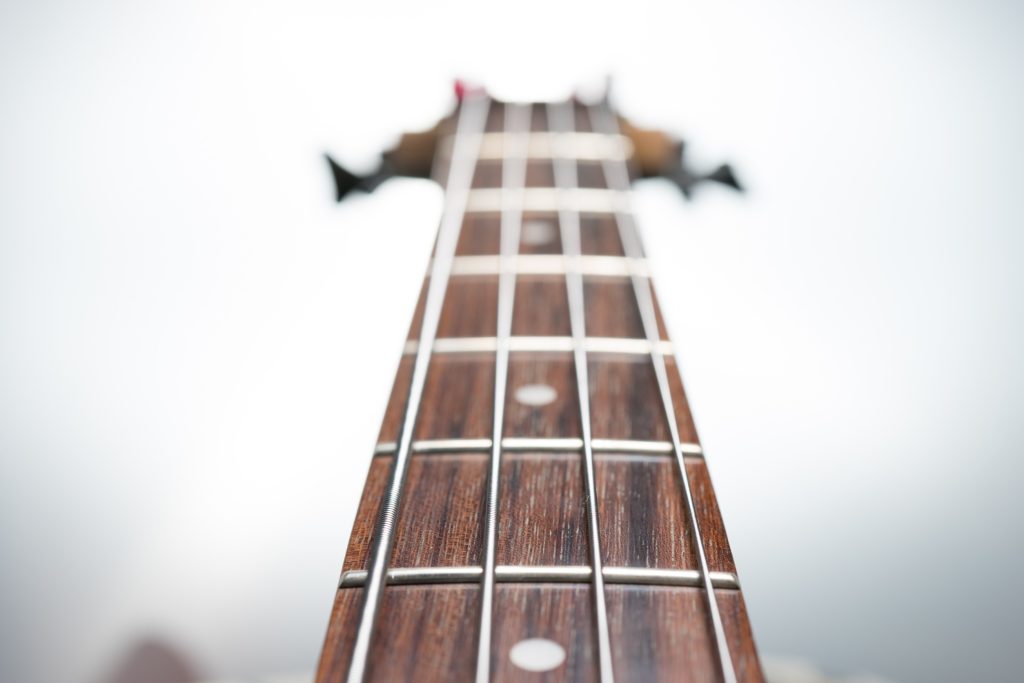
Frequently Asked Questions
Q: How is a bass guitar fretboard different from a regular guitar fretboard?
A: The most noticeable difference is the size – a bass guitar fretboard is wider and longer due to the lower pitch and larger string gauges used in bass guitars. The bass also typically has fewer strings (4 or 5) than a standard guitar (6).
Q: How can I quickly memorize the fretboard?
A: Start with the open strings and learn the notes one string at a time. Practice regularly and use visual aids like fretboard diagrams. Understanding patterns and octaves can also speed up the process.
Q: Why does the fretboard material matter?
A: Different materials can affect the sound and playability of the instrument. For instance, maple fretboards tend to provide a bright, punchy tone, while rosewood gives a warmer, more rounded sound.
Q: Do I need to clean my fretboard?
A: Yes, regular cleaning is important to remove dirt, oil, and sweat that can accumulate and affect your instrument’s sound and playability.
Q: Is it necessary to learn scales on the bass guitar fretboard?
A: While not necessary, learning scales can significantly improve your understanding of the fretboard, enhance your technique, and boost your ability to create bass lines and solos.
